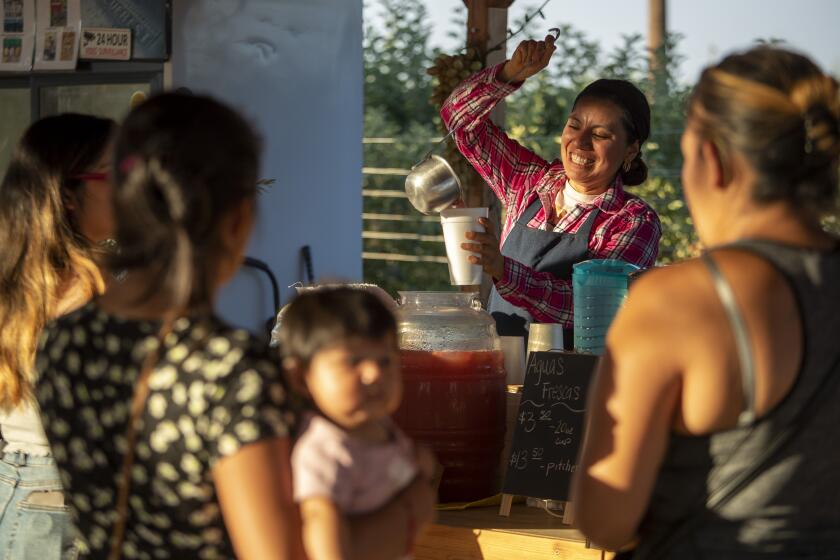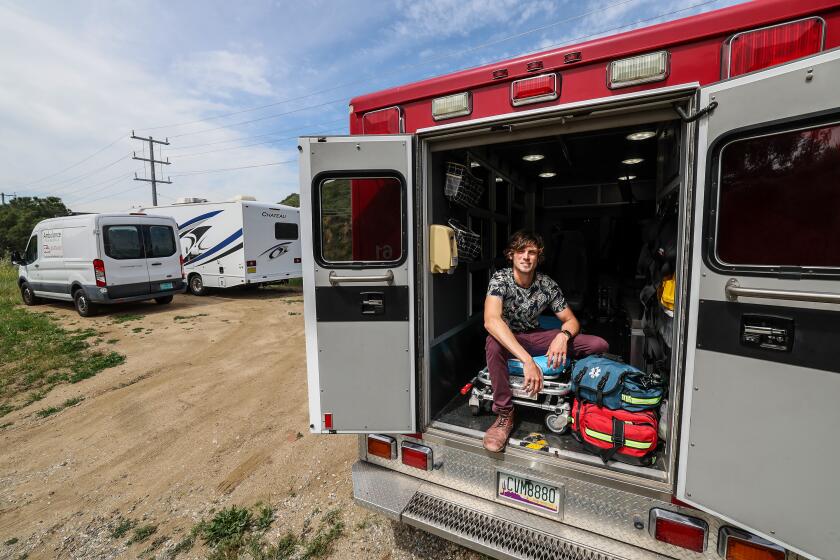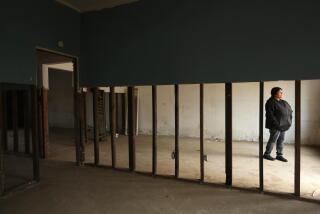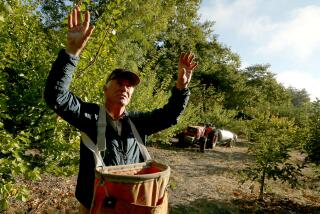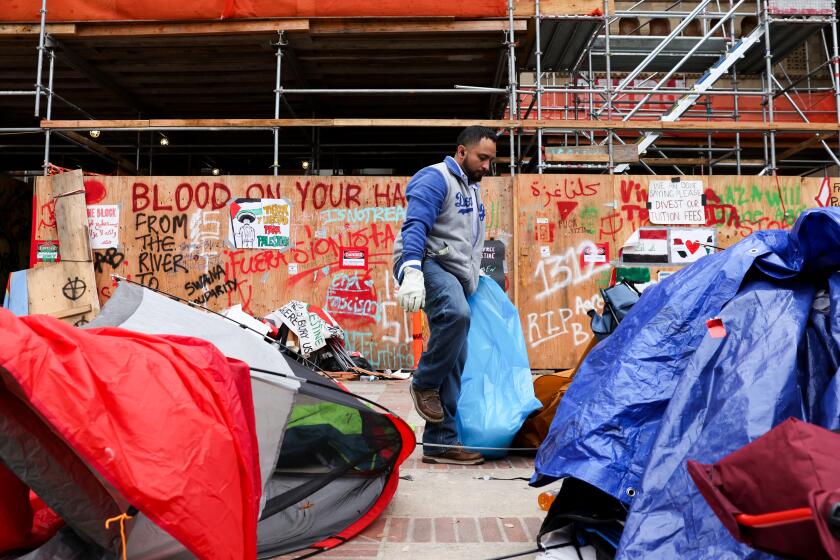Across the San Joaquin Valley, water wells are drying up due to rising temperatures and a lack of annual rain. In the rural town of Madera, the Sevilla family knows firsthand how living with little to no water is life-altering.
Fourteen years ago, Heriberto Sevilla came across a ranch on the outskirts of Madera set among fields of stalk grass and bright wildflowers. Pepper trees dotted the meadow, and children played in the natural lakes created by heavy rains.
It was the perfect place to raise a big family. So the 51-year-old native of Chilapa, Mexico, bought it and made sure the property included a functioning well.
On spring days, free time was spent lounging in the backyard. Heriberto taught his daughters how to ride horses. They helped him feed the chickens and sheep. Goats kept the area tidy, munching on grass. When fruit in the trees was ripe, he proudly showed his children how to harvest their bounty. And in the winter, his wife Sandra prepared a homemade birria for holiday festivities from their goats.
But then a darkness came over the little Eden the Sevillas had created.
Amid two years of relentless drought, the well’s output slowly tapered off. The family was forced to buy gallons of precious water from the grocery store to take showers, clean dishes and cook. They borrowed water from their neighbor to irrigate their almond and peach trees and feed their goats, sheep, chickens and horses.
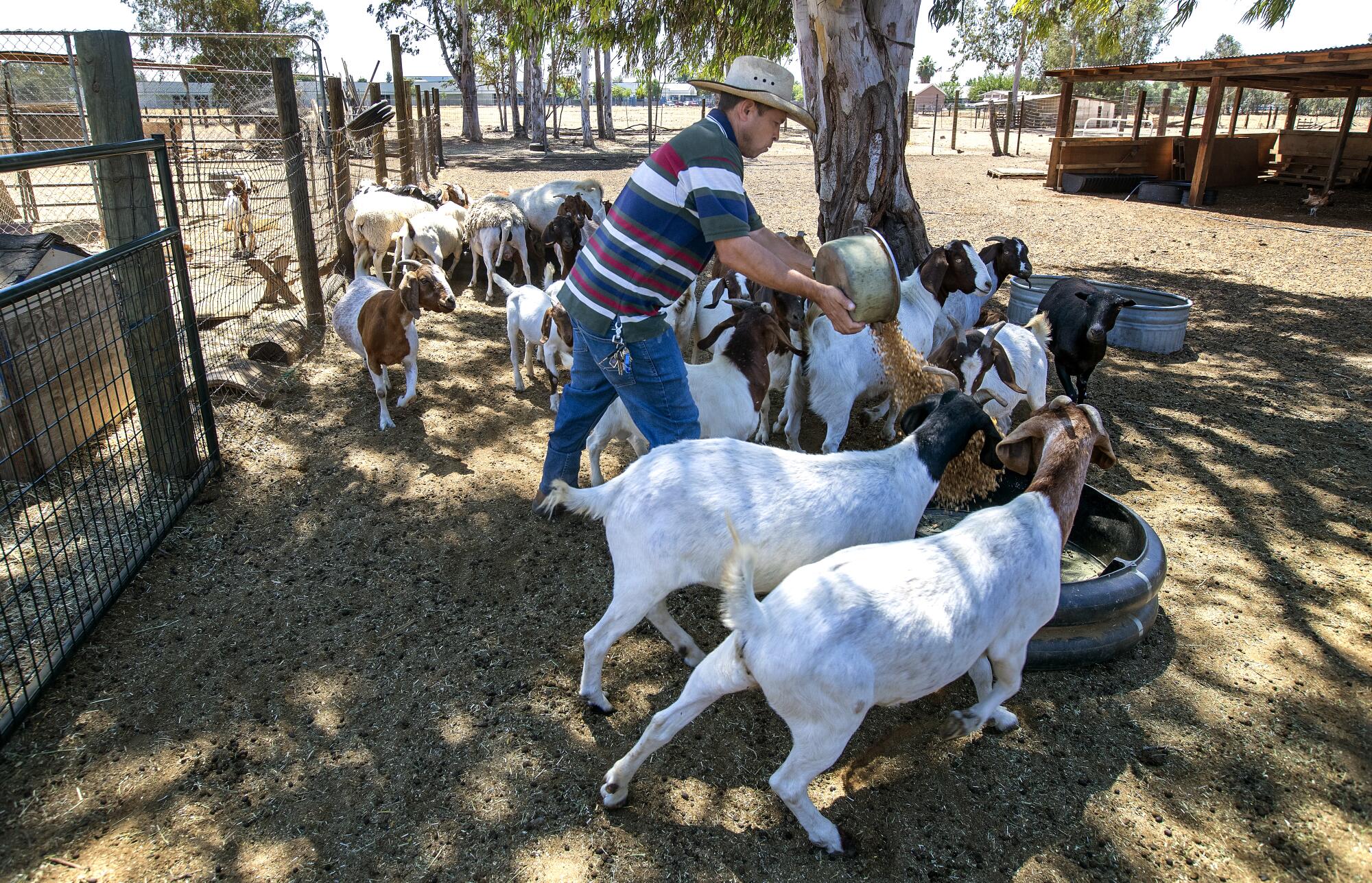
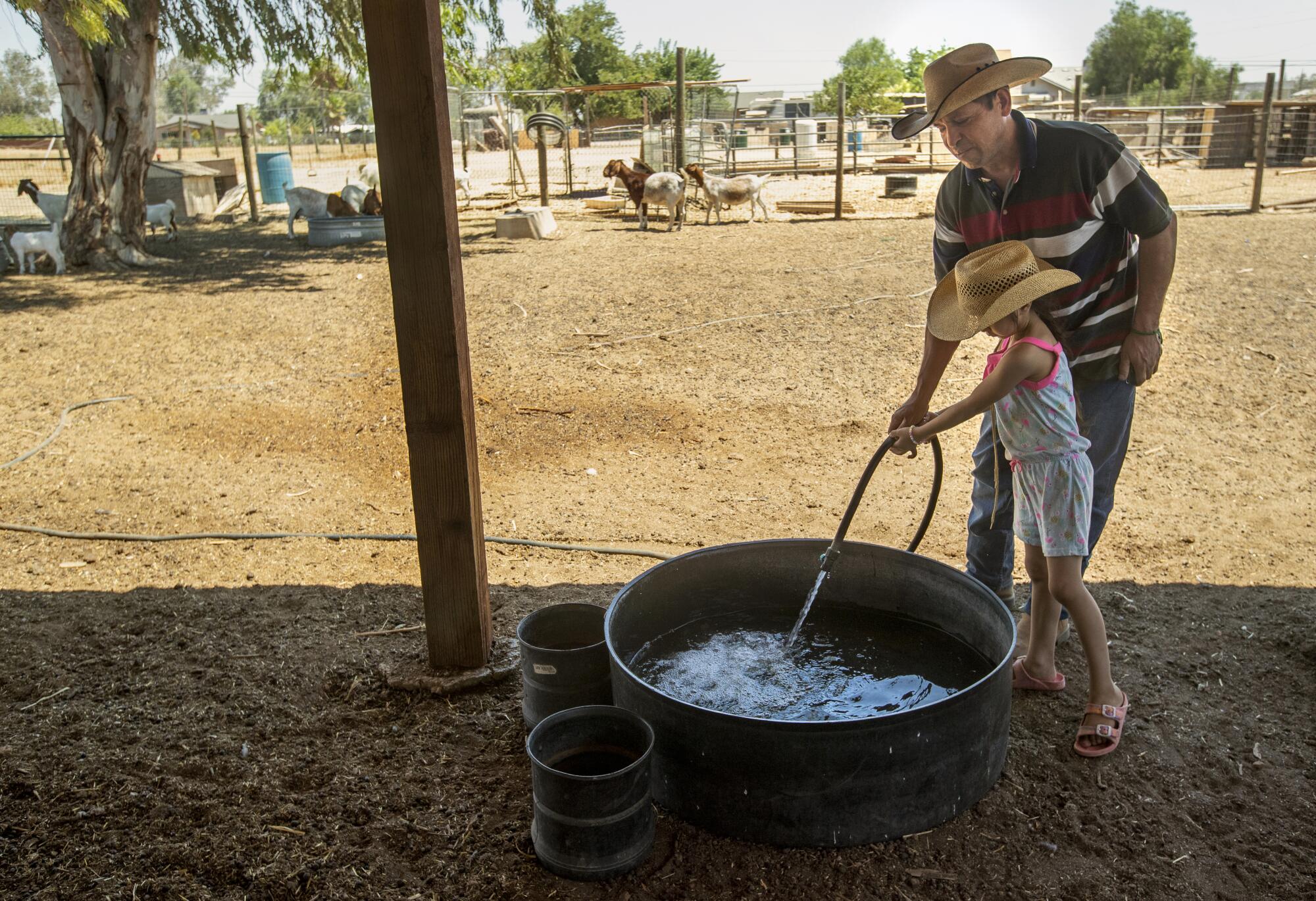
“Without water, you’re nothing,” Heriberto said. “Family is the most important thing. Plants are beautiful, and my animals help me relax. But what can we do?”
The Sevillas are just one of thousands households across the San Joaquin Valley whose wells have gone dry amid increasingly hot temperatures and drought. Every year, a new town in this verdant agricultural region seems to be pushed over the brink by water scarcity — like East Porterville, an unincorporated community in Tulare County, in 2014, and, most recently, Teviston, a census-designated place in the same county.
But these issues have plagued rural towns and unincorporated areas here for decades. And in the era of the coronavirus, these inequities have become magnified in an area that already had some of the highest poverty rates in the state.
“Drought is part of our life,” said Susana De Anda, cofounder and executive director of the Community Water Center, a nonprofit environmental justice organization based in the valley. “We need to ensure we invest in drought-resilient infrastructure. ... We can’t wait until wells go dry. That’s a disservice.”

Even those who can afford to pay upfront for new wells must join waiting lists as drilling companies await the back-ordered equipment they need to build and install them. Local officials provide jugs and gallons of water, and local organizations offer aid if resources aren’t already tapped out.
“We’re so inundated,” said Marliez Diaz, water sustainability manager at Self-Help Enterprises, a nonprofit organization that provides emergency services such as water storage tanks and filtration systems across the valley. In 2020, 121 temporary water tanks of 2,500 gallons were installed, 92 new water wells were constructed and 3,033 households received bottled water, according to an annual report.
The drought parched the natural landscape Heriberto once reveled in.
Plants withered, and the spacious backyard is now all dirt. Arianna, their 5-year-old daughter, gets coated with dust when she pretends to cook in her cottage playhouse. A patch of yellowing grass remains, a reminder of better days when Heriberto’s beloved horse grazed near his hammock. He sold his companion months ago to preserve water. He will sell more of his furry friends in the coming weeks.
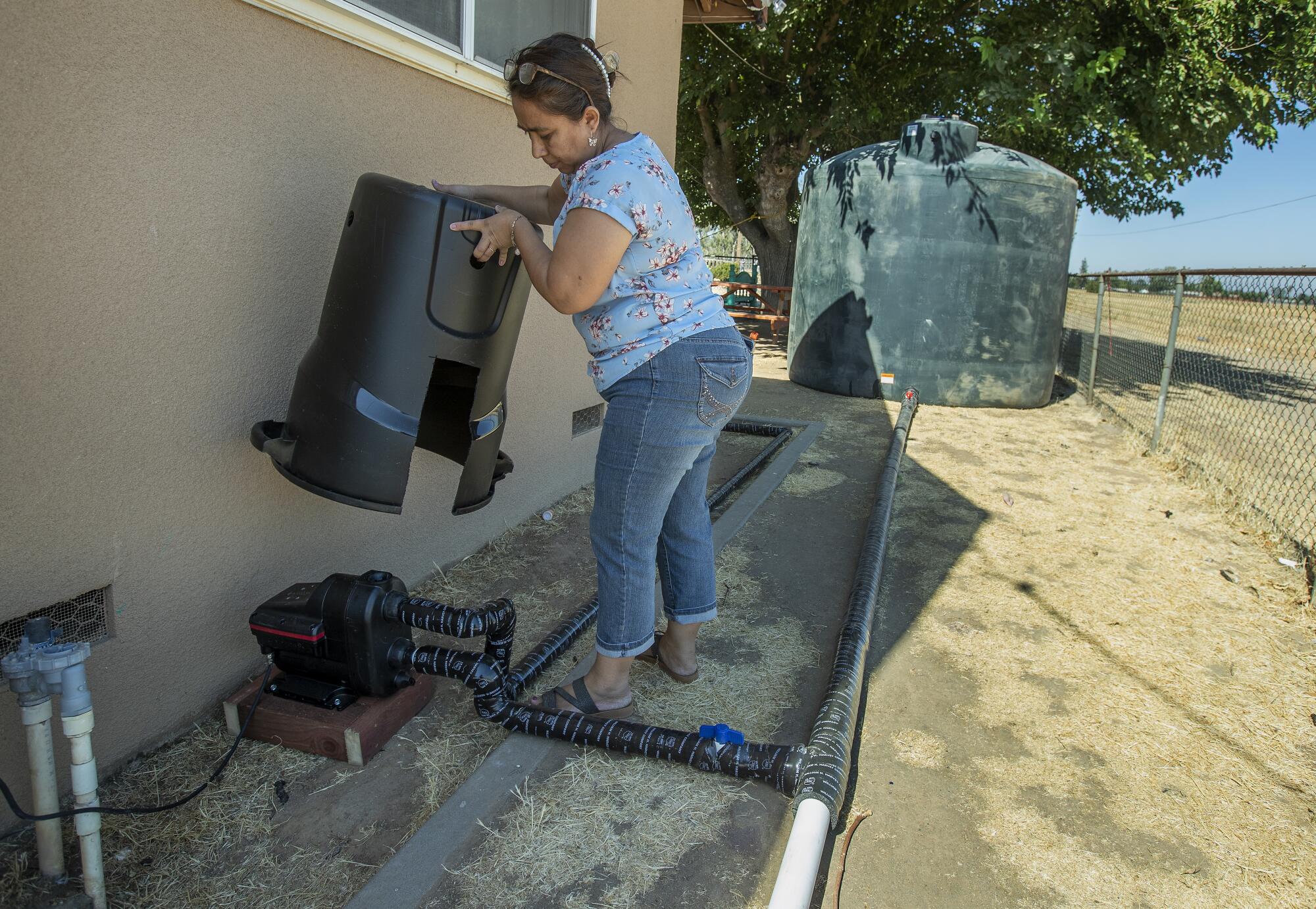
“Too many people don’t appreciate water,” Sandra said, “until this happens to you.”
On a recent weekday morning, a thin flow of water trickled from a faucet into a dirty bowl as she washed dishes. Sandra hunched forward to meticulously scrub it with a worn sponge, then poured the soapy water onto another plate.
Every so often, she allowed herself to get a bit more water.
Heriberto lived in the city of Madera when he first arrived in California in 1994. He picked tomatoes, onions and garlic for years until he found his way south in Santa Ana and met Sandra, who became his wife. The two rented a room and survived off of Heriberto’s earnings as a landscaper. But city life wasn’t for them.
This time, he returned with Sandra to an unincorporated area of Madera, where he found the place he’d finally get to call his own.
The first inkling of drought for the Sevillas happened in 2019 when the water pressure from their well dropped. Heriberto thought the pump’s motor might need to be replaced, or that maybe a tube broke. He asked five people familiar with wells for a diagnostic, and they all told him he was running out of water.
“Drought is part of our life. We need to ensure we invest in drought-resilient infrastructure .... We can’t wait until wells go dry. That’s a disservice.”
— Susana De Anda, co-founder and executive director of the Community Water Center

Sandra scaled back on how often she mopped their home’s tile floors. She lugged bags of soiled clothes to stuffy laundromats. If she dried her hands with a paper towel, she smoothed it out and reused it to wipe down the microwave and kitchen counters.
Showers were unpredictable. They’d sometimes have enough water to get wet and soap up, but then have to wait in the tub, covered in bubbles, hoping the water would resume. Most of the time it didn’t.
Her daughters “would get mad,” Sandra said. “The good thing is our neighbor helped us a lot.”
As the situation worsened, Sandra brainstormed a new routine. At dawn, she eked whatever little water drizzled out of the well into 5-gallon plastic buckets. She topped it off with her neighbor’s water. Each family member would shower with their allotted bucket. Whatever was left was used to flush the toilet. Single-use plastic water bottles were reserved for washing hands.
The shift in life harkened back to Sandra‘s and Heriberto’s childhoods in Mexico, but it came as an unwelcome shock to their four daughters and son.
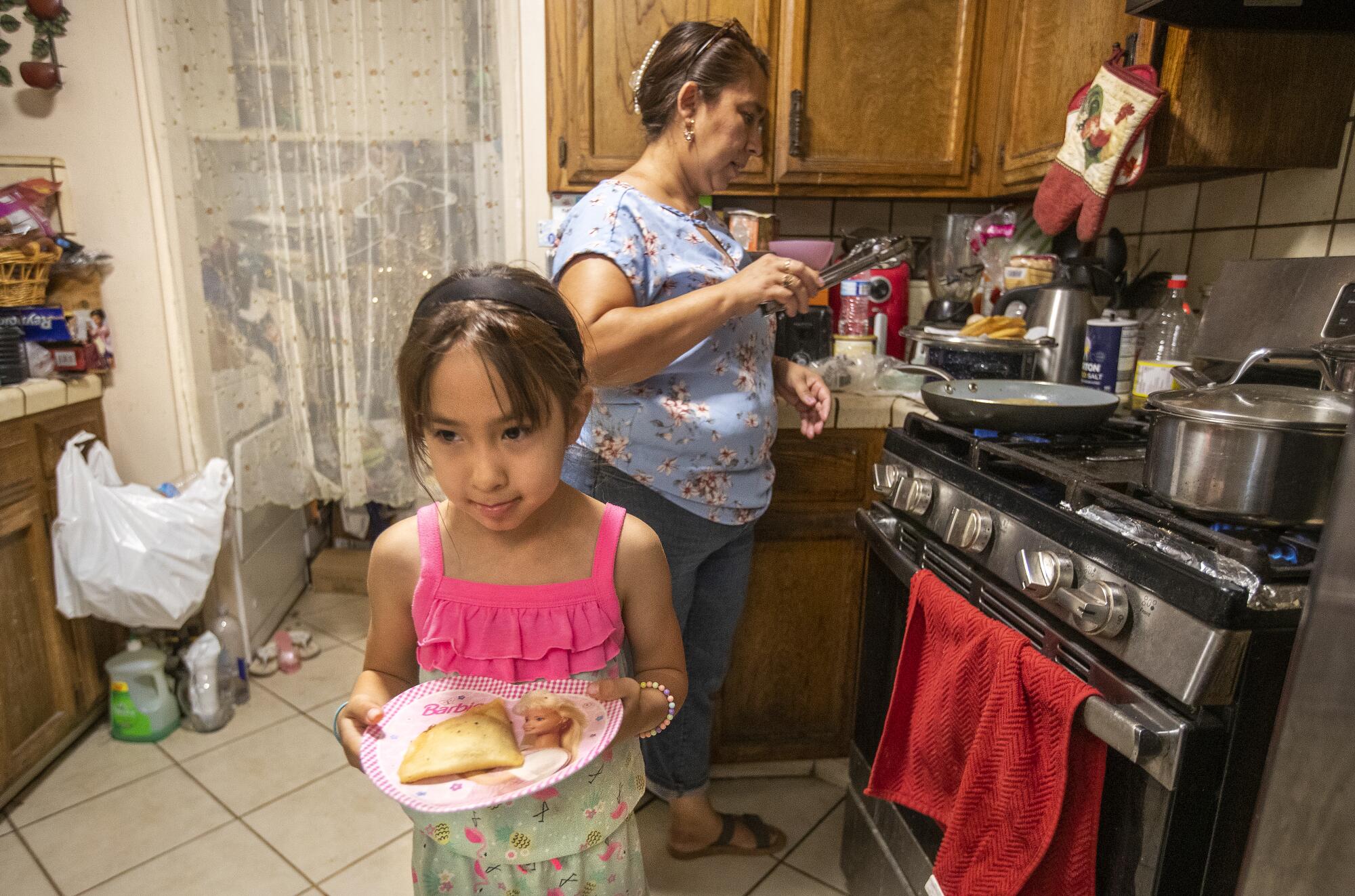
Emilee Sevilla, 21, learned how to scale back her hourlong showers to 15 minutes. She cut down on the products she uses on her hair and face and no longer lets the water run while she prepares to shave her legs, turning on the shower only when she’s actively using it, even now that they’ve received help.
“I’m only 21 and this is what I have to deal with,” she said. “At one point I’m going to have certain struggles when I grow up, and I guess in a way it’s mentally preparing me for the future.”
In October, while her parents were on a trip to Mexico, Emilee stayed behind with her younger brother because of school and work. She was certain there would be no water issues with fewer people in the house.
As she prepared to shower before a work shift, however, only foam oozed out of the shower head. Shutting the well pump off and on didn’t work. She grabbed two water bottles from the refrigerator and washed her face in the bathroom sink.
At Sweet Girl Farms, Liset Garcia seeks to be as resilient as her sunflowers, as she tends a bustling fruit stand amid a dire dry period.
Over a choppy phone call, she told her parents what happened.
Henry Shillings, a longtime resident who has paid attention to the water discussions in the region, saw Emilee walking in and out of her home. He knew exactly what had happened. His mother had sold her property to Heriberto, and he reckoned that the well had come to the end of its life. He learned their well water flow had dropped to 20 gallons per minute — hardly any pressure compared with his 65 gallons per minute.
Without hesitating, he connected a hose to his well that was long enough to reach the Sevillas’ home. “We’re neighbors,” he said. “That’s what neighbors do. We help each other if we can.”
Two weeks ago, the Sevillas reached a temporary solution with a 2,500-gallon water tank in their backyard.
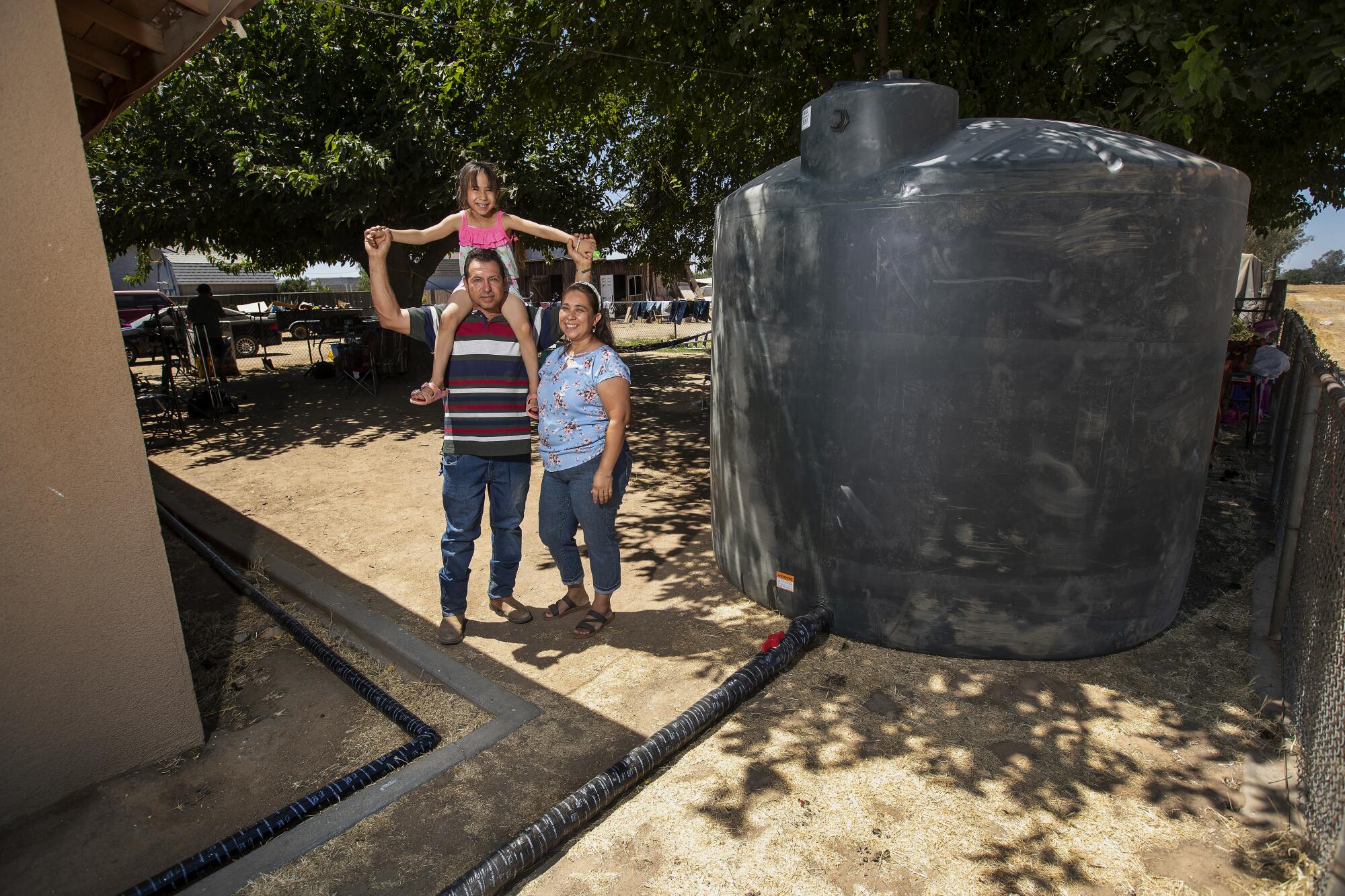
Hours after they received their temporary water tank, Sandra and Heriberto took a moment of rest in their backyard. A cool breeze wafted past them, tickling their tree’s leaves on a sweltering afternoon. They sat in silence and watched Arianna sit inside her cottage playhouse. Duke, their German shepherd, lay at their feet.
The tank meant they’d have one year of guaranteed clean, precious water, a reprieve from buying a new well, which are as expensive as a brand-new Ford Mustang.
Because they understood this gift, their drought routine would not change. Sandra left the two buckets in the tub — Arianna enjoyed her showers that way.
“Thank God we’re going to have this help,” Sandra said as she sipped cold water.
Soon they would start visiting banks in hopes of qualifying for a loan to pay for a new well. But in this fleeting moment, in the face of a drought that is only expected to get worse, life felt normal again.
More to Read
Start your day right
Sign up for Essential California for news, features and recommendations from the L.A. Times and beyond in your inbox six days a week.
You may occasionally receive promotional content from the Los Angeles Times.


